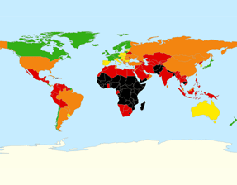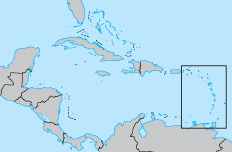Children of Barbados
Realizing Children’s Rights in Barbados
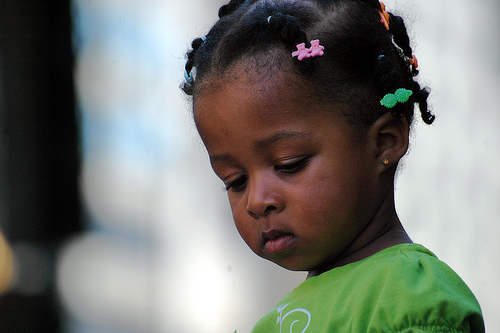
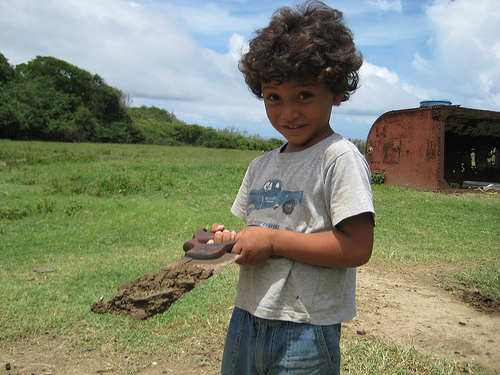
Barbados is the most prosperous country in the Caribbean region. Education is free and compulsory for children under the age of 16 and healthcare is easily accessible. Despite this, Barbados is a country caught between modernity and poverty: Barbadians live with the problems associated with developed countries as well as those of poor countries.
Population: 288.725 Life expectancy: 75,4 years |
Main problems faced by children in Barbados:
Although the poverty rate in Barbados in 2007 was the lowest in the Caribbean region, it was still relatively high at 14%. Three children out of 20 do not receive the nutrition necessary for their development and 8.7% of Barbadian households live below the poverty threshold.
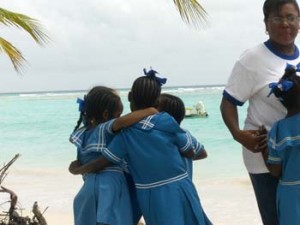 Education in Barbados is free, accessible and compulsory for children under the age of 16. While 90% of the population is literate, the remaining 10% remains uneducated for reasons of poverty or special needs.
Education in Barbados is free, accessible and compulsory for children under the age of 16. While 90% of the population is literate, the remaining 10% remains uneducated for reasons of poverty or special needs.
Many families cannot afford the cost of books, uniforms and transport, or may need children to leave school and go to work in order to bring in income.
As for disabled children, no provision is made for their needs within the school environment, with the result that many are unable to attend school.
Premature pregnancies
Despite efforts on the part of the authorities, pregnancy and abortion rates among adolescents remain high: 5% of young girls aged 16 years and 25% of women aged 18 years have already given birth to a child.
Barbados benefits from a health system accessible to a large portion of the population however, the number of children born with HIV is increasingly worrying.
In children, HIV is more often transmitted from the mother to the child, but it is also transmitted to young girls who have forced, non-protected sex in exchange for food, clothes, and transport. Because of their HIV positive status, many children find themselves marginalised and excluded from the social system in Barbados. Out of every 2700 cases of HIV infected persons in Barbados, 100 are children.
Following the introduction of antiviral treatments in Barbados, between 2001 and 2010 the mortality rate for HIV positive Barbadians fell from 10% to 2%.
Obesity
Obesity is an emerging problem in Barbados due to poor nutrition and an increasingly more sedentary lifestyle.
Violence and abuse toward children
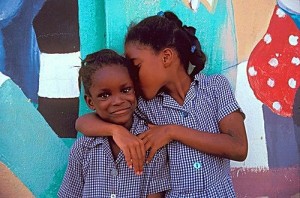 Children under 12 years are particularly susceptible to physical violence, at home and at school. Corporal punishment is a common form of discipline in Barbadian schools, public and private, and has not yet been banned by law.
Children under 12 years are particularly susceptible to physical violence, at home and at school. Corporal punishment is a common form of discipline in Barbadian schools, public and private, and has not yet been banned by law.
Inquiries have shown that sexual abuse remains high in Barbados, especially among adolescent and, as mentioned above, poverty can force girls into prostitution.
Drugs and crime
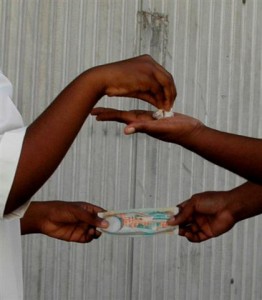 Drugs and crime are prevalent in Barbados, the result of high rates of poverty, and result in a violent society. The main substances consumed in Barbados are marijuana, alcohol and cocaine.
Drugs and crime are prevalent in Barbados, the result of high rates of poverty, and result in a violent society. The main substances consumed in Barbados are marijuana, alcohol and cocaine.
Child labour is not yet eradicated in Barbados, though its rates have diminished with the introduction of compulsory schooling for children under the age of 16.
Many children in Barbados either attend school full-time and work part-time, often late into the evening, or leave school to work full-time. In the poorest parts of the island, children are engaged in pornography and prostitution.

